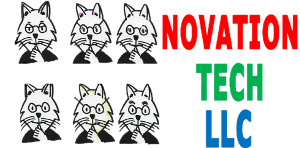 When we finish a product development brainstorming session, the cats at Novation usually have hundreds of ideas in the form of a haystack of sticky notes. Each note has a single idea on it. It feels like we went from no ideas, to too many ideas. How do we dig only the best ideas out of the stack?
When we finish a product development brainstorming session, the cats at Novation usually have hundreds of ideas in the form of a haystack of sticky notes. Each note has a single idea on it. It feels like we went from no ideas, to too many ideas. How do we dig only the best ideas out of the stack?
- Get rid of the clearly silly ideas. In brainstorming, one of the rules is to put down absolutely any thought, even if it is totally unrelated and ludicrous. Such ideas are helpful during the brainstorming process because they might trigger legitimately good ones. But once the brainstorming is finished, the silly ideas can be pulled out of the haystack and abandoned.
With the brainstorming group going through the stick notes and just asking “keep or toss”, they will easily and quickly be able to pull out the silly ideas; don’t be shocked if up to half of the ideas are tossed. It’s not that unusual. Don’t worry-you’ll still have lots of ideas to evaluate.
- Make sure you read the notes. This very basic step is needed. In a fast brainstorming session the ideas get written down quickly and often are difficult to read, so go over each remaining note with the group and make sure it’s legible.
- Obtain more detail. While going through the notes ask for more detail or the reasoning behind the idea where appropriate. You don’t need a lot of detail, just enough make the idea on the sticky note more clear. Generally, you should be able to add the extra detail to the same sticky note.
- Put the notes in logical groups. As you are going through the notes, quite often you will see ideas that are related. Put all of those sticky notes together in groups. For example, if you are talking about transportation you may have several notes about cars, several about trains, bikes, airplanes, etc. Often the same idea will come up multiple times; this especially happens if you had several groups do the brainstorming. You can eliminate notes with the same idea, but it is a good idea to keep track of how many of the ideas were identical, because the more frequently the ideas comes up, the more likely it is to be a viable solution. Think about it.
- Have the experts review what’s left. If you followed the steps above, you probably have eliminated a lot of the lesser ideas and are down to a manageable number. You now should have fewer than 50% of the original haystack of notes left, and this could still total a hundred or so. But now only the serious ideas remain and they are grouped in a logical manner. It is suggested that the groups of sticky notes be recorded in a document for later reference. You may also want to make sure you know who came up with each of the ideas. There could be a true invention on those sticky notes, and you may want to file for a patent; to do so you need to know who had the original inventive idea.
At this point, you can hand the ideas to the experts for their use in the design. They’ll know what to do with the ideas, and they will thank you.


 The facilitator can and ideally will participate too. The facilitator should encourage everyone present to participate and produce lots of ideas. Now and then the facilitator should toss in a stimulus word for people to think about like “football”, or “insects”, or “bread pudding”; such odd words often trigger new thoughts.
The facilitator can and ideally will participate too. The facilitator should encourage everyone present to participate and produce lots of ideas. Now and then the facilitator should toss in a stimulus word for people to think about like “football”, or “insects”, or “bread pudding”; such odd words often trigger new thoughts.